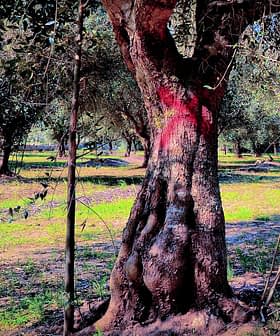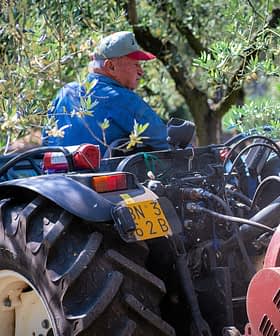
Nerium oleander infected with deadly strain of bacterium Xylella fastidiosa. From Phoenix, Maricopa Co., Arizona, USA. (Wikipedia)
There is grave concern in Europe’s olive oil sector over the first appearance there of a plant disease said to have already infected tens of thousands of olive trees — many of them a century-old — in Italy’s Puglia region.
Scientists have recommended uprooting and destroying the diseased trees amid the “extremely rapid spread” of the bacterium Xylella fastidiosa (Xf), according to Italian Member of the European Parliament Raffaele Baldassarre.
Baldassarre, of the European People’s Party, has asked the European Commission for urgent aid to address what he described as a “particularly dangerous agent that has never been identified in Europe but which, in America and Asia, has caused disease in various species of plants, including vines and citrus trees, resulting in substantial losses to the agricultural sector and the economy.”
Fear of spread to other areas, crops
In a yet to be answered written question to the Commission, Baldassarre said that in recent months the “very serious, extensive and deadly plant disease” had been spreading among olive trees in Puglia and in particular in the province of Lecce.
“The epidemic, which causes the trees to dry out, has spread across an area ofaround 8,000 hectares, affecting tens of thousands of olive trees. Following investigations and tests carried out by all the offices and institutions responsible, incontrovertible evidence has emerged that the infection comes from a bacterium called ‘Xylella fastidiosa’,” he said.
“The vastness of the area and the number of affected trees, not to mention the extremely rapid spread of the bacterium, is causing grave concern not only for the damage already done, but for that which might be caused by further contagion, which could affect the rest of the olive, and other, crops in Puglia, Italy and Europe.”
Call for aid to cordon off affected area and uproot trees
“In the light of this dangerous, scientifically proven epidemic and of the only course of action recommended, namely the uprooting and destruction of the diseased trees, can the Commission say:
1. what measures it intends to take, as a matter of urgency, to ascertain and conduct checks on the epidemic in question and, consequently, what scientific and technical aid can be provided to support local institutions;
2. what financial measures can be taken with a view to setting up a sanitary cordon around the affected area and uprooting the infected trees, in order to prevent the spread of the bacterium;
3. what financial assistance can be given to producers affected by this extremely serious infection that is causing such great economic damage?
Extensive leaf scorch and dieback of olive trees seen in Puglia
According to the European and Mediterranean Plant Protection Organization (EPPO), it first became aware of the possible presence of Xf on olive trees (Olea europaea) in Southern Italy in mid-October, when a member of the public alerted it via its Facebook page.
In a report under the heading “First report of Xylella fastidiosa in Italy”, the EPPO, a intergovernmental organization responsible for plant protection in Europe, said that about the same time, Italy’s National Plant Protection Organization (NPPO) had sent information about the involvement of Xf in disease observed there, namely “extensive leaf scorch and dieback of olive trees, spreading rapidly in the area of Salento (Puglia region).”
While initial tests for Xf were positive, “the NPPO had stressed that the definitive identification of the bacterium still awaits its isolation in pure culture in order to perform pathogenicity tests,” the EPPO report said.








